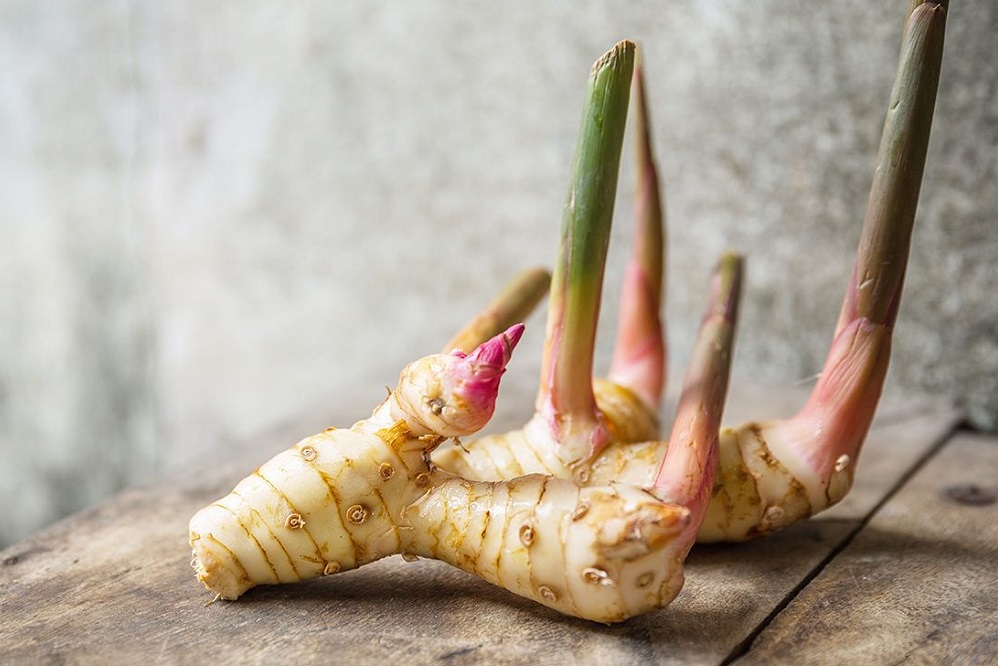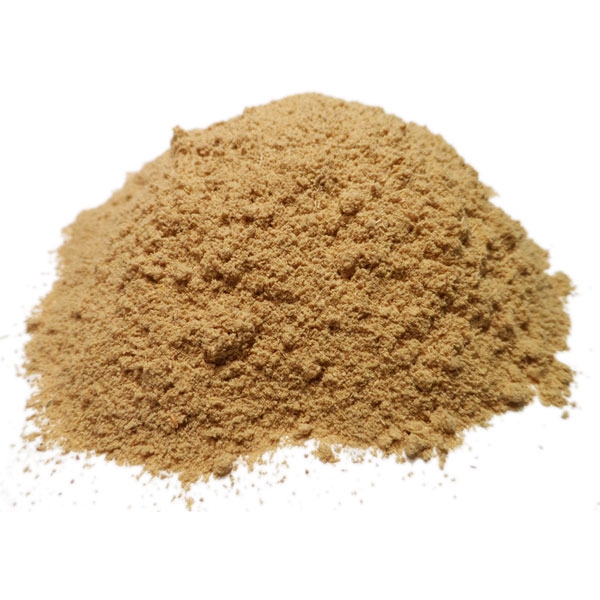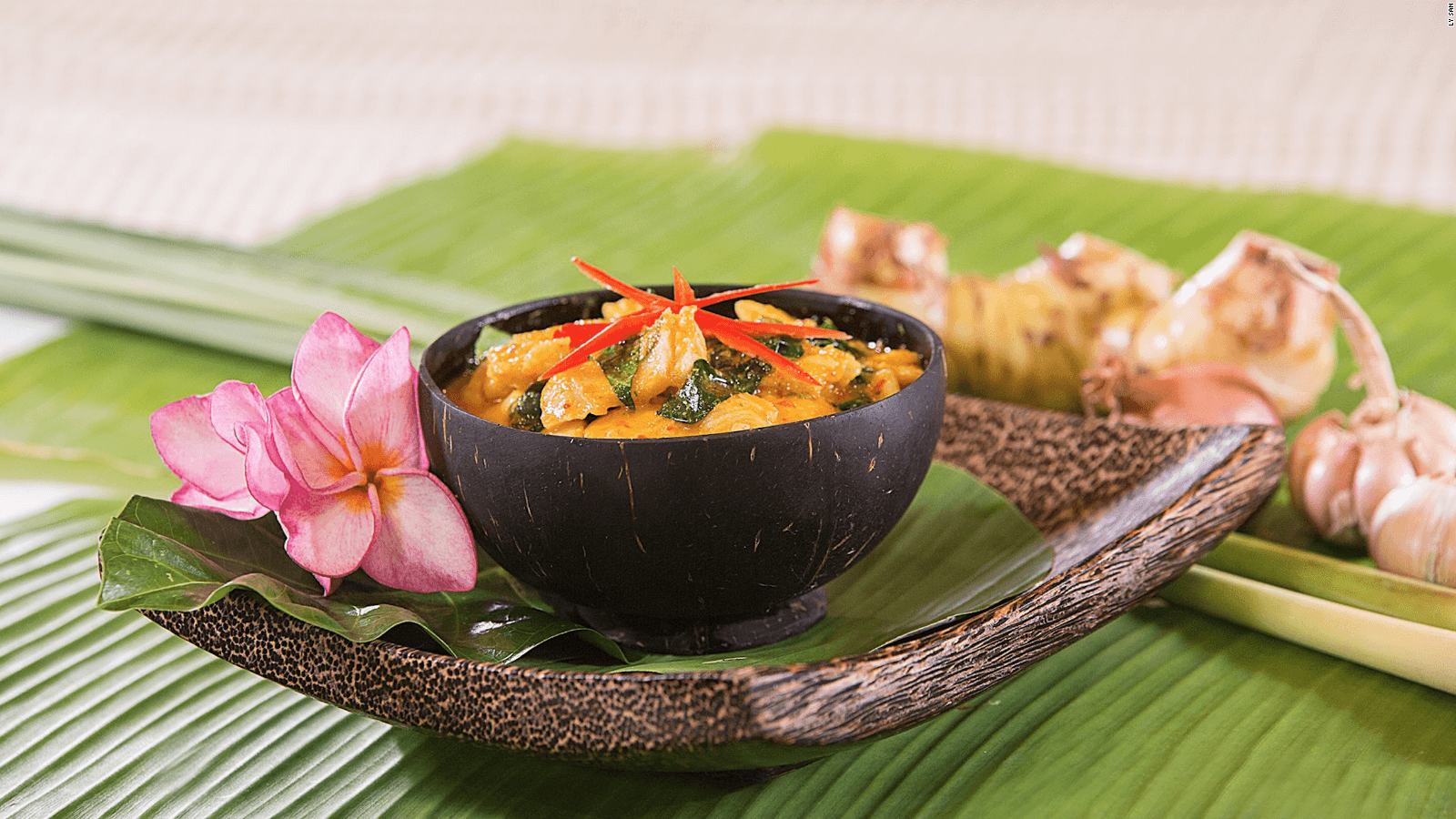Galangal is a particularly aromatic rhizome which, on the nose, presents a nuanced mix between its lemony notes reminiscent of kaffir lime, slightly peppery and camphorated.
In the mouth, if it is less powerful than ginger, this spice still offers a surprising experience. Its aroma of great sweetness, almost sweet, at the beginning of the mouth, reveals a spicy taste in the final note. Its flavor pleasantly perfumes traditional or exotic sauces, soups and broths.
As with ginger roots or kaffir lime peel, you should soak it for about thirty minutes in water at room temperature to facilitate its use.
It will flavor your broths, soups and soups simply by letting it infuse during cooking. Asians use it very often for this purpose.
In Thailand and Laos we taste the Tom Yam soup which combines galangal, lemongrass, kaffir lime leaves, lemon juice, fish sauce, peppers and some fresh aromatic herbs around beef, poultry or shrimp. We also like the Tom Kha Gai soup whose spice blend is based on galangal, kaffir lemon leaves, lemongrass, peppers, coriander, fish sauce and lime.
In Indonesia we like the soto ayam soup, the chicken of which is cooked in a coconut milk broth flavored with lemongrass, cumin, kaffir lime, lemon leaf and of course galangal.
The galangal rhizome delicately accompanies poultry or seafood. It generally flavors a coconut milk sauce coating minced chicken.
You can also easily grate it on a fish fillet. You will add it without fear in your marinade of langoustines.
Even if it is rarer, there are typical dishes in which we use beef. Try to perform a Daging Rendang. This beef curry with a mixture of pemasak spices is a traditional dish of the Indonesian Minangkabau ethnic group.
In Cambodia, it is the basis of many dishes such as somlar kari saek mouan, a chicken curry with beans, eggplant and potatoes, or tod man pla, succulent fish cakes.
It is used in the composition of many curries. It is particularly associated with bird pepper, ginger, kaffir lime, lemongrass, coriander leaves or seeds, cumin or paprika. Your meats or seafood will then be imbued with Asian flavors to meet your desires for exotic and exotic cuisine.
Its flavor enhances vegetables in a gratin or simply to give your sautéed vegetables a little pep. Think of winter vegetables, sweet potato, parsnip, carrots, which are particularly suitable for stews, which a galangal sauce will decorate nicely.
Get inspired by nasi goreng, one of the Indonesian national dishes composed of fried rice in a sweet soy sauce typical of Indonesia (kecap manis), a shrimp paste called terasi, fried shallots and garlic, to make delicious stir-fried rice dishes in a version with chicken or vegetarian with vegetables.
You can also try ginger pastry recipes by replacing the latter with galangal. Its flavor lends itself very well to the sweet register. Try, for example, a chocolate fondue flavored with kaffir lime and galangal!
You can add it to your fruit smoothies or detox cocktails. Its invigorating aroma will energize your tired body.
As an infusion, it can be used alone as a decoction or to give your herbal tea a little tone that will warm you up.
Galangal is said to have antiviral activity. It could also relieve pain caused by osteoarthritis.
Its richness in flavonoids and terpenes (galangol, galangine) has earned it the ability to use it to stimulate appetite and fight nausea. It is also used as an infusion in traditional Asian medicine for the action of its anti-inflammatory substances in relieving nausea (morning sickness, motion sickness, etc.). It can also have an effect on painful periods.
However, be careful when using too high a dose, the galangal could cause stomach irritation.
The rhizome of liang-kiang, sweet ginger in Chinese, entered the Chinese pharmacopoeia a long time ago. Reputed to protect against many ailments, this root was even worn as a talisman to protect against evil spirits. It is then Ayurvedic medicine which integrated the galangal.
But it was the Arabs who first incorporated it into their pharmacopoeia under the name of khalangian before introducing it to France. Arab and Persian doctors such as Avicenna (980-1037), Constantine the African (1020-1087) or Abu Muhammad Ibn al-Baitar (1197-1248) have contributed to praise its virtues for health.
Its taste quickly appealed to Europeans keen on exotic condiments, who incorporated it into all kinds of medieval recipes, as evidenced by “le Mesnagier de Paris”, a 14th century domestic and culinary manuscript, which talks about the garingal. Until the 16th century, we will talk about its effects in reducing migraines, coughs, stomach aches, heart problems, pulmonary disorders … before being eclipsed by ginger for a very long time…
Storage: protected from air, humidity and light












